A very strong solar flare measuring M9.8 erupted from Active Region 3500 at 19:50 UTC on November 28, 2023. The event started at 19:35 UTC and ended at 20:09 UTC. Earth-directed CME is very likely.
- This could be the 4th and the strongest CME expected to impact Earth over the next couple of days.
- A G2 – Moderate Geomagnetic Storm Watch is in effect for December 1.
A Type II Radio Emission with an estimated velocity of 854 km/s was detected beginning at 19:59 UTC. Type II emissions occur in association with eruptions on the Sun and typically indicate a coronal mass ejection (CME) is associated with a flare event.
Additionally, a 10cm Radio Burst (Tenflare) with a peak flux of 720 sfu, was associated with the flare event. A 10cm radio burst indicates that the electromagnetic burst associated with a solar flare at the 10cm wavelength was double or greater than the initial 10cm radio background. This can be indicative of significant radio noise in association with a solar flare. This noise is generally short-lived but can cause interference for sensitive receivers including radar, GPS, and satellite communications.
Region 3500 is located at the center of the solar disk, making Earth-directed CMEs very likely.
Radio frequencies were forecast to be most degraded over SW USA, Central America, W South America and the Pacific Ocean at the time of the flare.
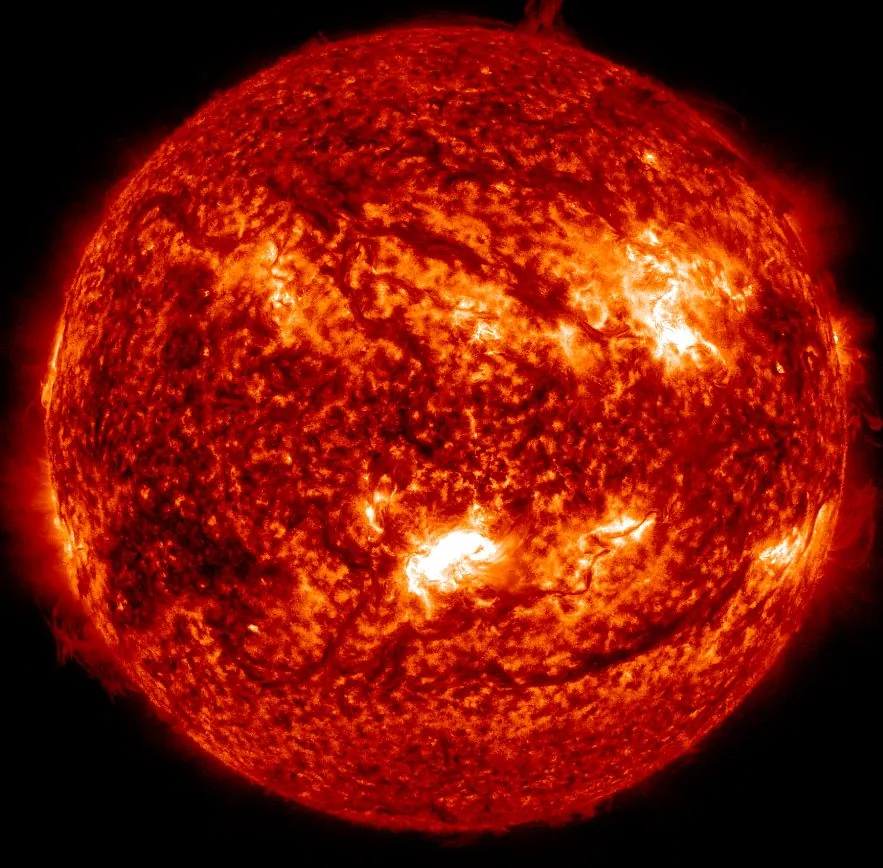
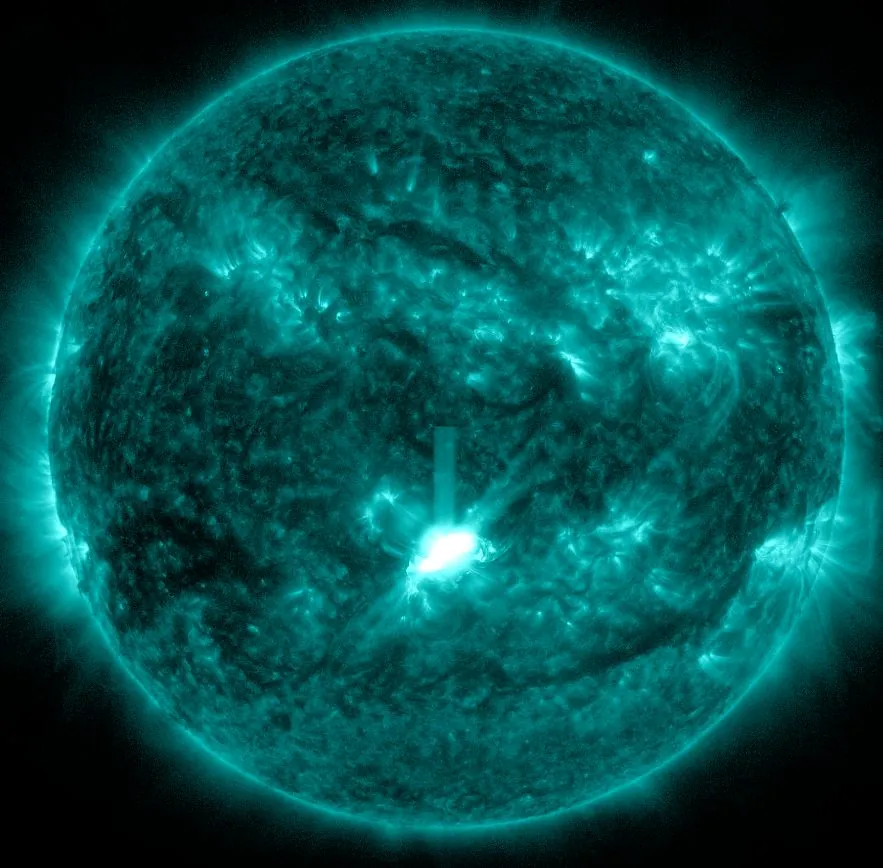

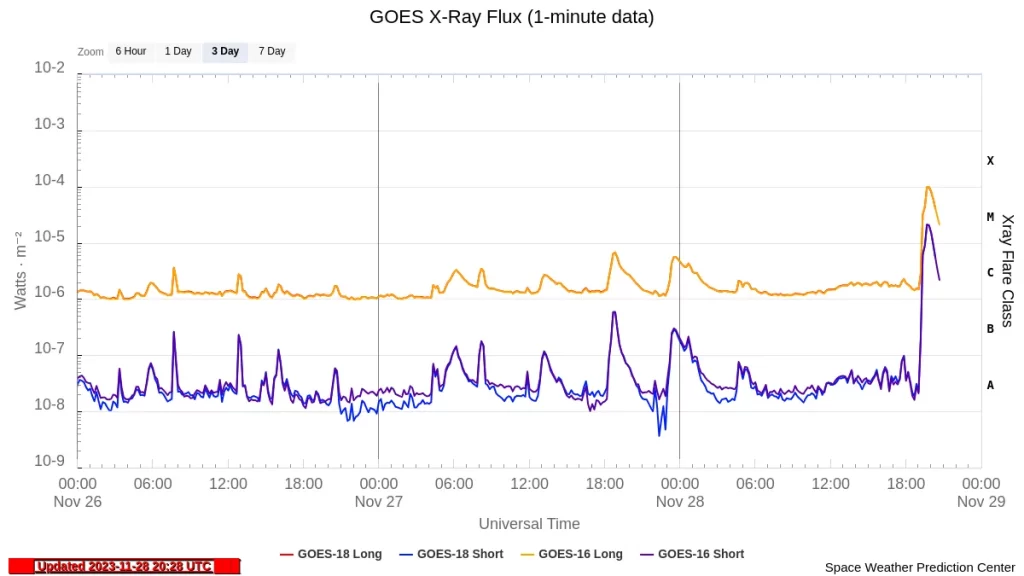

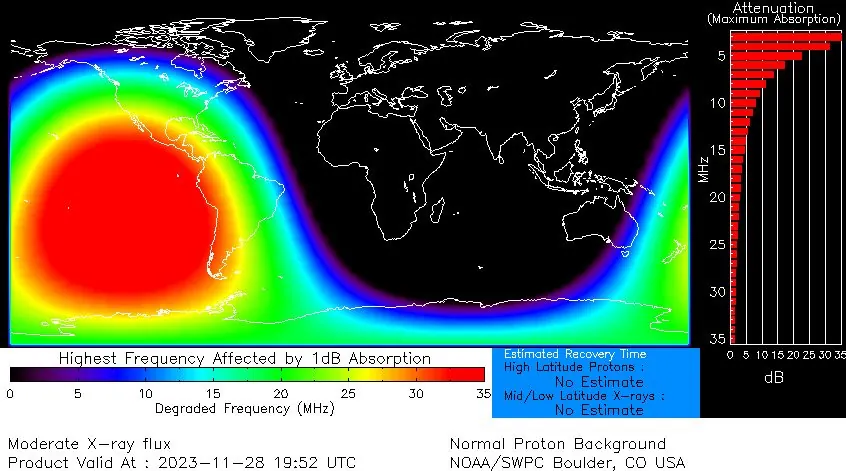

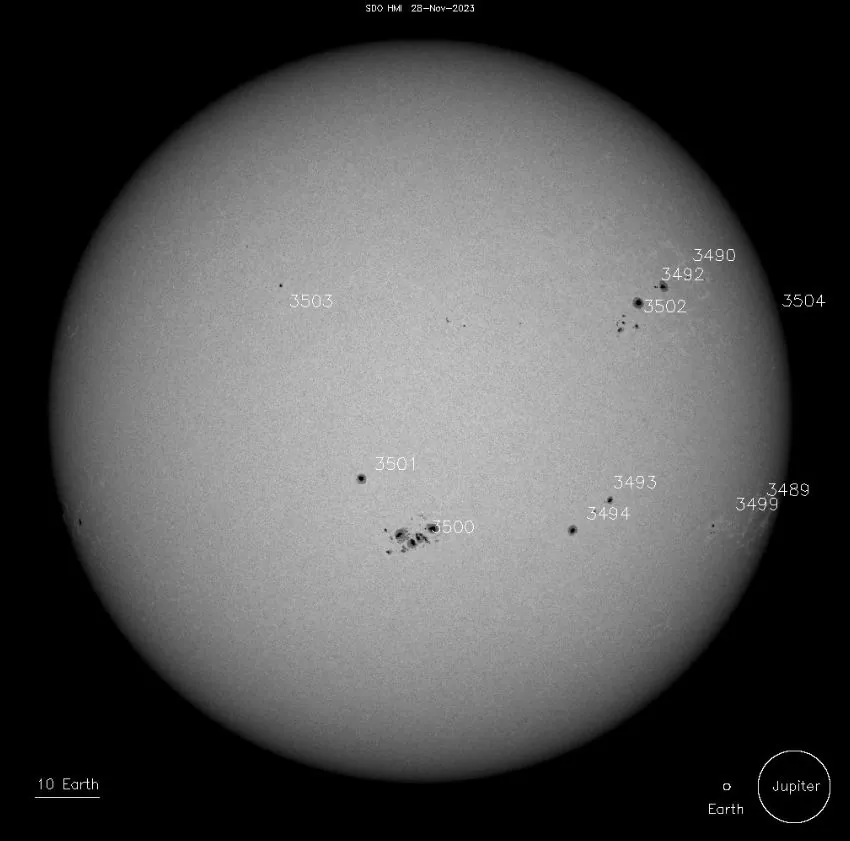

Multiple CMEs were produced on November 27, with three of these appearing to have Earth-directed components.
The first arrival is a potential glancing blow or near-Earth proximity passage beginning early November 30 (UTC).
The later CMEs are anticipated to arrive at Earth early December 1 (UTC) as at least glancing blows.
As a result, SWPC issued a G2 – Moderate Geomagnetic Storm Watch for December 1.
Potential impacts: The area of impact is primarily poleward of 55 degrees Geomagnetic Latitude.
Induced currents – Power grid fluctuations can occur. High-latitude power systems may experience voltage alarms.
Spacecraft – Satellite orientation irregularities may occur; increased drag on low Earth-orbit satellites is possible.
Radio – HF (high frequency) radio propagation can fade at higher latitudes.
Aurora – Aurora may be seen as low as New York to Wisconsin to Washington state.
Featured image credit: NASA SDO/AIA 131, Helioviewer, The Watchers
If you value what we do here, create your ad-free account and support our journalism.
Global SAR arc outbreak: Geomagnetic storm leads to rare SAR arc sightings across the globe
Wednesday, November 8, 2023
Geomagnetic storm reaches G3 – Strong level after dual CME impact
Monday, November 6, 2023
Large filament eruption produces partial-halo CME, impact to Earth expected on November 5
Saturday, November 4, 2023
Strong M8.7 solar flare erupts from Region 3435
Thursday, September 21, 2023
Strong M8.2 solar flare erupts from Region 3435
Wednesday, September 20, 2023
Two CMEs strike Earth, producing G3 – Strong geomagnetic storm
Tuesday, September 19, 2023
G2 – Moderate to G3 – Strong geomagnetic storm conditions forecast for September 19
Monday, September 18, 2023